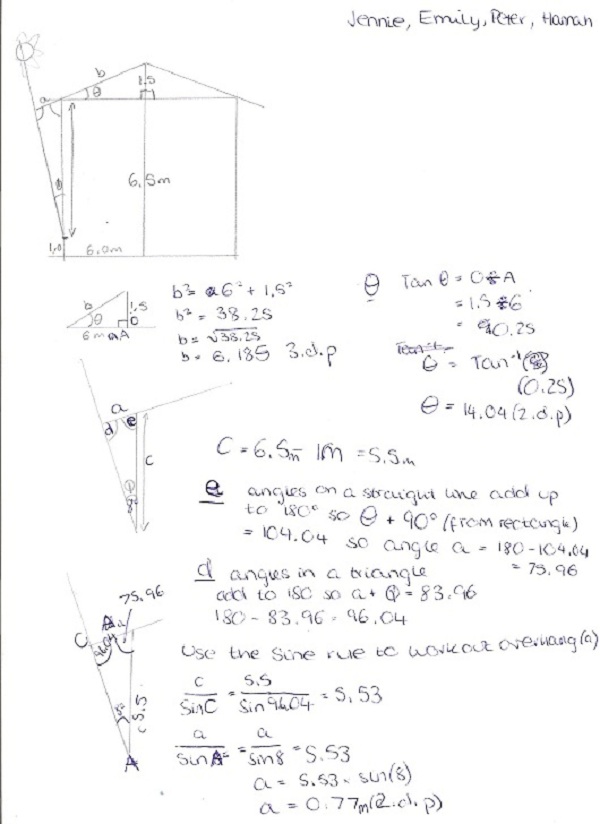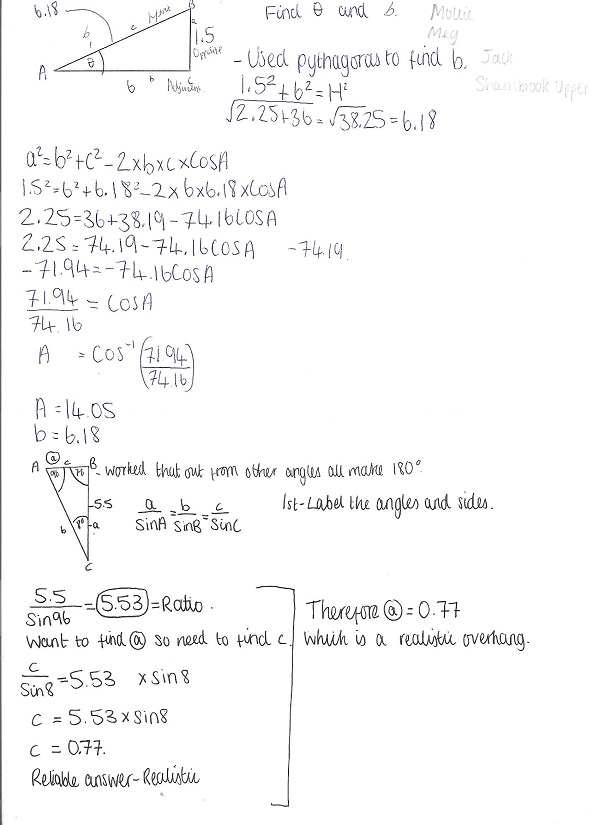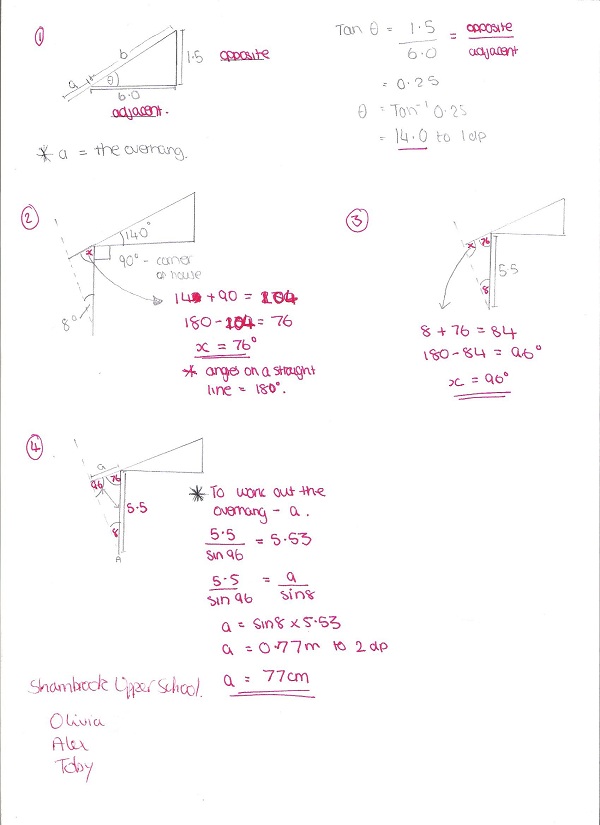Skip over navigation
We have had a number of excellent solutions to this problem from Year 11 pupils in Sharnbrook School in Bedforshire. And they didn't all solve the problem in the same way...
Jennie, Emily, Peter and Hannah sent in this solution, and used Pythagoras' Theorem to find one of their answers.

Megan, Shivani, Will, Austen and Michael managed to find b in a different way, using what they knew about the angles in the roof.

Mollie, Meg and Jack also used Pythagoras, and relabeled the angles and sides to make it easier for them to answer the questions. Perhaps they should have returned to the original labels at the end of their solution...

Olivia, Alex and Toby sent in very clear solutions to the first and third parts of the problem. We'll assume that they could have also done the second part!




Or search by topic
Number and algebra
Geometry and measure
Probability and statistics
Working mathematically
Advanced mathematics
For younger learners
Raising the Roof
Age 14 to 16
Challenge Level 





- Problem
- Getting Started
- Student Solutions
- Teachers' Resources
We have had a number of excellent solutions to this problem from Year 11 pupils in Sharnbrook School in Bedforshire. And they didn't all solve the problem in the same way...
Jennie, Emily, Peter and Hannah sent in this solution, and used Pythagoras' Theorem to find one of their answers.

Megan, Shivani, Will, Austen and Michael managed to find b in a different way, using what they knew about the angles in the roof.

Mollie, Meg and Jack also used Pythagoras, and relabeled the angles and sides to make it easier for them to answer the questions. Perhaps they should have returned to the original labels at the end of their solution...

Olivia, Alex and Toby sent in very clear solutions to the first and third parts of the problem. We'll assume that they could have also done the second part!

You may also like
Bendy Quad
Four rods are hinged at their ends to form a convex quadrilateral. Investigate the different shapes that the quadrilateral can take. Be patient this problem may be slow to load.
Quadarc
Given a square ABCD of sides 10 cm, and using the corners as centres, construct four quadrants with radius 10 cm each inside the square. The four arcs intersect at P, Q, R and S. Find the area enclosed by PQRS.
Get Cross
A white cross is placed symmetrically in a red disc with the central square of side length sqrt 2 and the arms of the cross of length 1 unit. What is the area of the disc still showing?

